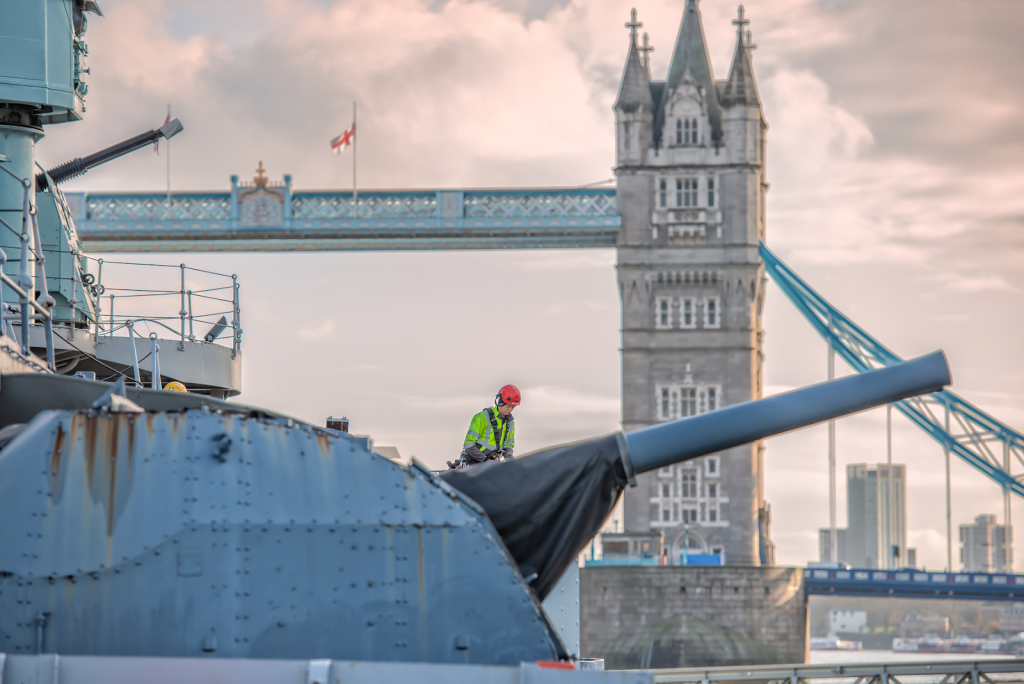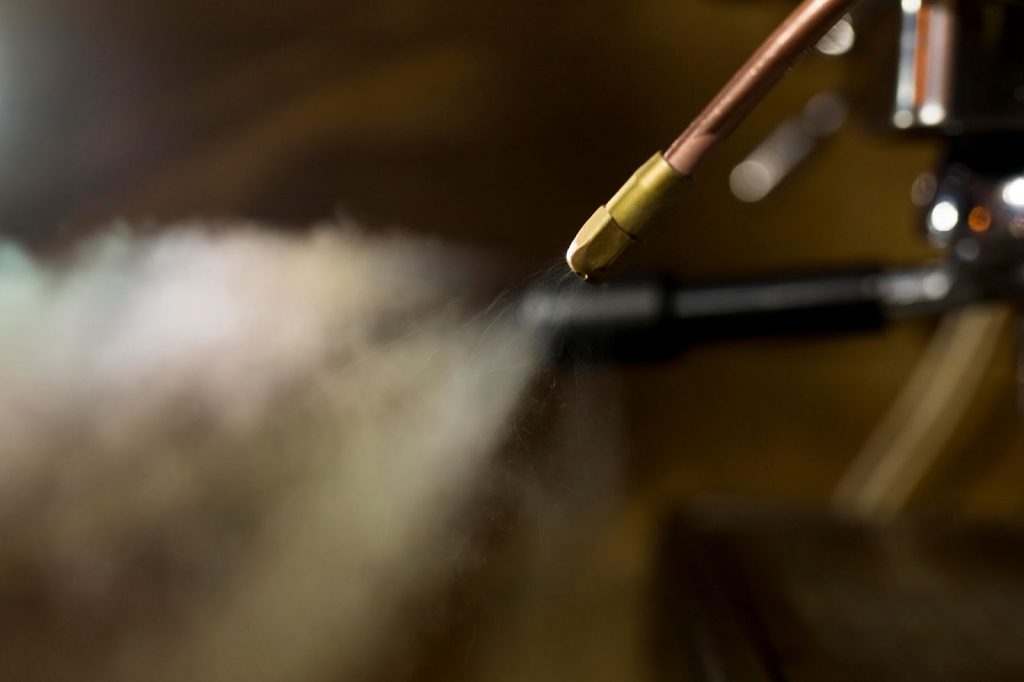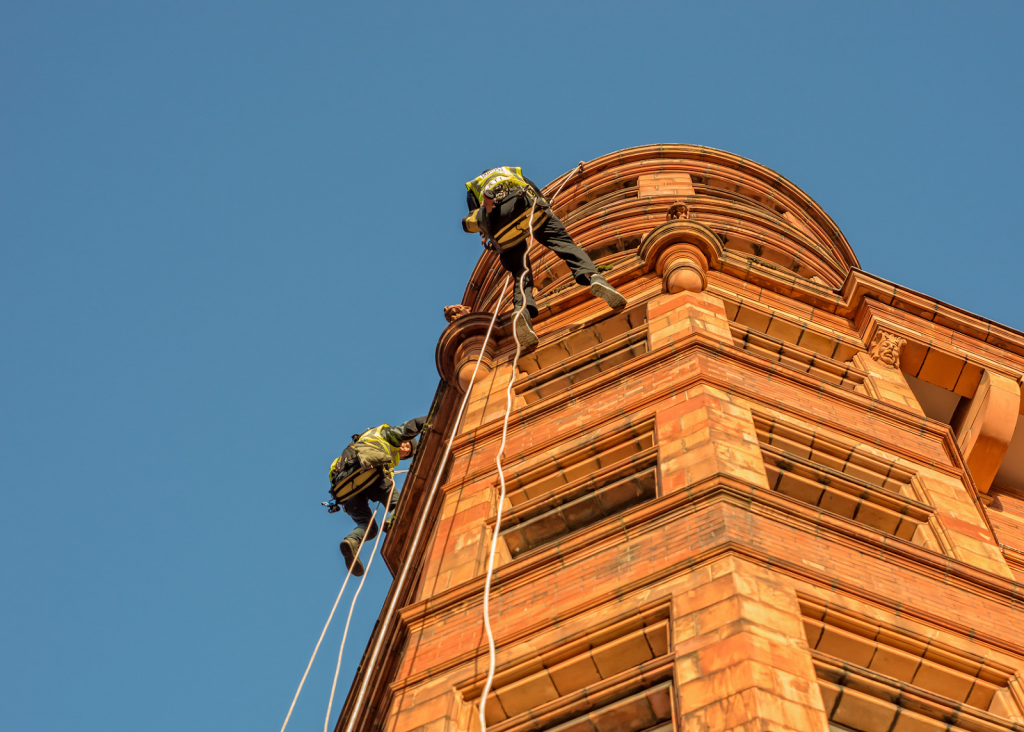
When you’re operating offshore oil and gas rigs or wind turbines dozens of metres above the sea, maintenance isn’t just about keeping equipment running — it’s about keeping people alive.
At Rope Access in London (RAIL), we’ve spent years perfecting the delicate balance between operational efficiency and unwavering safety standards. Our work in industrial settings, particularly with oil & gas rigs, has taught us that cutting corners isn’t just bad business. It’s potentially catastrophic.
The industrial landscape has evolved dramatically over the past two decades. Rigs that were once maintained through traditional scaffolding methods now benefit from advanced rope access techniques, allowing our specialist technicians to reach previously inaccessible areas with minimal disruption to operations.
But with these innovations comes an even greater responsibility to maintain rigorous safety protocols whilst delivering exceptional maintenance services.
Why Does Rig Maintenance Demand Such Unwavering Attention?
The hostile environment of offshore installations presents unique challenges that simply don’t exist in conventional building maintenance.
The Cost of Neglect
A single day of downtime on an oil rig can cost operators hundreds of thousands of pounds. But the financial implications pale in comparison to the potential human cost. A corroded handrail or a deteriorating walkway can transform from a minor maintenance issue into a life-threatening hazard within months.
Our approach to rig maintenance involves proactive intervention rather than reactive repairs. When we conduct surveying on industrial installations, we’re identifying potential failure points before they become critical. This comprehensive methodology has prevented countless incidents and saved our clients substantial sums in emergency repairs.
Environmental Factors
The North Sea doesn’t take prisoners. Wind speeds that would ground aircraft, waves that dwarf buildings, and temperatures that swing from scorching summers to bitter winters — these are the conditions our technicians face regularly.
Each environmental factor accelerates wear and tear in distinct ways. Salt spray corrodes metal at alarming rates, ultraviolet radiation degrades protective coatings and seals, whilst thermal expansion and contraction create microscopic fractures that grow with each cycle.
Industrial waterproofing must withstand not just rain, but the constant battering of seawater, the penetrating nature of salt-laden wind, and the mechanical stress of a structure that’s never truly still.
What Safety Protocols Keep Workers Alive?
Safety protocols in rig maintenance aren’t bureaucratic red tape — they’re the accumulated wisdom of decades of industrial work.
1. Training Beyond Compliance
Anyone can memorise a safety manual. What separates exceptional industrial technicians from merely competent ones is the instinctive integration of safety consciousness into every decision.
Our welders don’t just know that certain fumes are hazardous; they understand wind patterns and ventilation dynamics well enough to position themselves optimally.
We invest heavily in continuous training that goes far beyond statutory requirements. Whilst we maintain all necessary certifications for rope access work, we also cross-train our teams in adjacent disciplines.
This holistic approach extends to our commercial and residential work as well. When we’re conducting cleaning, glazing, or installing large format banners on high-rise buildings, the same safety culture applies.
The techniques may differ, but the mindset remains constant: comprehensive preparation, redundant safety systems, and constant situational awareness.
2. Equipment Integrity
In rope access work, equipment is life support. Every carabiner, every rope, every ascender undergoes meticulous inspection before, during, and after use.
We maintain detailed service records for every piece of equipment, tracking its usage history, inspection results, and replacement schedules.
3. Communication Systems
On a bustling rig with machinery roar, helicopter traffic, and the ever-present howl of wind, clear communication becomes exponentially more critical and simultaneously more difficult. We’ve invested in state-of-the-art communication systems that work reliably even in the most challenging conditions.
But technology alone isn’t sufficient — we’ve developed clear communication protocols that rely on multiple channels: verbal, hand signals, and electronic.
Before any work begins, we conduct detailed toolbox talks where every team member understands everyone’s responsibilities. We establish clear reporting lines, define emergency procedures, and ensure that everyone knows how to raise concerns without fear of repercussions.

How Has Technology Transformed Rig Maintenance Practices?
The intersection of traditional industrial skills and cutting-edge technology has revolutionised how we approach rig maintenance and safety.
Predictive Maintenance
Gone are the days when maintenance schedules were based purely on calendar intervals or operational hours. We now employ predictive maintenance techniques to identify developing problems before they manifest as failures.
When we conduct surveying on industrial installations, we’re armed with technology that can detect internal corrosion, identify stress concentrations, and assess coating integrity without destructive testing.
Digital Documentation
Every inspection we conduct, every repair we execute, and every maintenance task we complete is meticulously documented in digital systems that create comprehensive facility histories.
When we return to a rig or wind turbine for subsequent maintenance, we have instant access to everything that’s been done previously — what coatings were used, what repairs were made, what issues were flagged for monitoring.
It helps us deliver consistently high-quality service regardless of which team members are deployed.
Materials for Harsh Environments
The materials we use today bear little resemblance to those employed even a decade ago. Modern protective coatings offer dramatically improved corrosion resistance. Waterproofing membranes are more durable and flexible. Welding consumables produce stronger, more reliable joints.
We work closely with material suppliers and manufacturers to stay at the forefront of these developments.
Bringing It All Together
The challenges facing industrial installations aren’t diminishing. If anything, ageing infrastructure, more extreme weather events, and increasing operational demands are making maintenance more critical than ever.
But with the right combination of skilled personnel, proven techniques, advanced technology, and uncompromising safety standards, these challenges are manageable.
Rig maintenance isn’t glamorous work. It’s demanding, sometimes dangerous, and always requires absolute attention to detail. But it’s also deeply satisfying work that keeps critical infrastructure operating, keeps people safe, and keeps energy flowing to millions of homes and businesses.
At RAIL, we’re proud to play our part in this essential industry, bringing the same level of expertise and commitment to industrial installations that we apply to all our services.


















